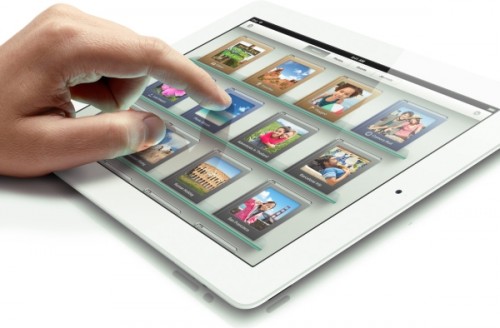Not everyone checks up the specs on the new Apple iPad before buying the shiny toy, but for those who do, they will find an interesting entry in a section called Wireless and Cellular.
Not only is there mention of the touted “4G” or LTE (Long Term Evolution) speed upgrade, which supports the 700MHz and 2,100MHz frequencies, but the iPad can also log on to older networks running UMTS/HSPA/HSPA+/DC-HSPA in four other frequencies. And get this, the new iPad also supports GSM networks in the good old 800, 900, 1,800 and 1,900MHz frequencies as well.
Confused already? That, by the way, is just for the AT&T model in the United States. Also listed on the Apple website is a Verizon model, which supports LTE all the same, but “falls back” on a different older network called CDMA EV-DO, along with the rest of the other cellphone network technologies, if LTE is not available.
Nobody but geeks used to care about the alphabet soup here, but as more LTE devices hit the market this year, as the iPad did this weekend, this fragmentation of wireless network technologies is becoming a huge problem for device makers and users alike.
LTE was meant to unify these disparate technologies evolved over the years, but with 38 different frequencies expected to be rolled out around the world, the new technology is adding to the problem instead.
Indeed, when they took their new iPads out of the box just days ago, many users outside the United States found to their dismay that the touted “ultra fast” wireless connection was only going to be part of the specs on paper, because the LTE networks in their countries used a different frequency.
Well-known tech site GigaOm has a nice chart here, indicating the different frequencies being rolled out. It tells a story of poor coordination among the telecom industry and potential for compatibility issues for users crossing borders with their LTE phones.
If you bring an LTE phone or USB stick from Singapore into the US, for example, you won’t be able to log on to the LTE networks there. You can still log on through 3G, but then you’d be kept out of the faster LTE network.
This is a throwback to the issues with different frequencies in the past. In the 1990s, the European-led GSM was supposed to unify the even more disparate standards then, but GSM itself was rolled out in different frequencies. Travellers from Singapore used to have to get a “special” Motorola tri-band phone to log on to US networks to roam, because the GSM networks there ran on a different frequency.
Then came 3G, the big 3G, which was touted as a unifying global standard. It was a straightforward upgrade for many GSM operators, since most of them adopted the more popular W-CDMA flavour of 3G. But others who had been using a rival cellphone technology called CDMA went their own way, coming up with upgrades like cdma2000 1x and EV-DO. They called these networks 3G too.
Still without a truly unified technology for cellphones, we arrive at LTE now. It should be known as “pre-4G” and was meant to unify all these different networks where 3G had failed to do so, before all heading to the same wireless nirvana known as 4G, where speeds can go up to 100Mbps.
Yet, the industry seems to have stumbled again. This time, the fragmentation looks even worse than before.
Just a small difference in the frequency can mean that you won’t be able to keep your phone while swapping LTE operators. In the US, even though Verizon and AT&T are both running LTE in the 700MHz band, the slight variance within the frequency band means that you cannot use your Verizon LTE device on AT&T’s LTE network.
What does this mean for LTE? In short, devices have to support a lot of frequencies to be able to be used everywhere. Or, there would have to be many versions of the same device catering to different operators. Either way, the current situation doesn’t make for economies of scale, and guess who ends up paying the price?
The iPad may be the first device facing this issue, but it won’t be the last. Other device makers have been careful in bringing in LTE devices into Singapore, as Techgoondu understands, because of the potential compatibility issues and cost (they’d rather sell high volumes of a “global” 3G version of a phone that costs less).
But at least, in Singapore, all three operators are running the same type of networks. M1, which started off as a CDMA operator, decided to switched to GSM in 2001. Unlike in the US, this means users can easily swap their SIM cards into different phones without being tied to one operator.
Looking forward, can device makers tackle the problem, as they have done in the past, by cramming more radios to support more frequencies and networks? It is possible, with innovations like multi-frequency antennas that may be low-cost to build if they get into mass production.
But it may also be time for the mobile industry to get their act together as a whole. It’s true different markets roll out their networks at a different pace – India and Thailand are just getting 3G now, never mind LTE – but the least the industry can do is trim down the number of frequency bands and stick to the ones agreed by most.
Right now, it’s just a mess. And it’s just the start.







